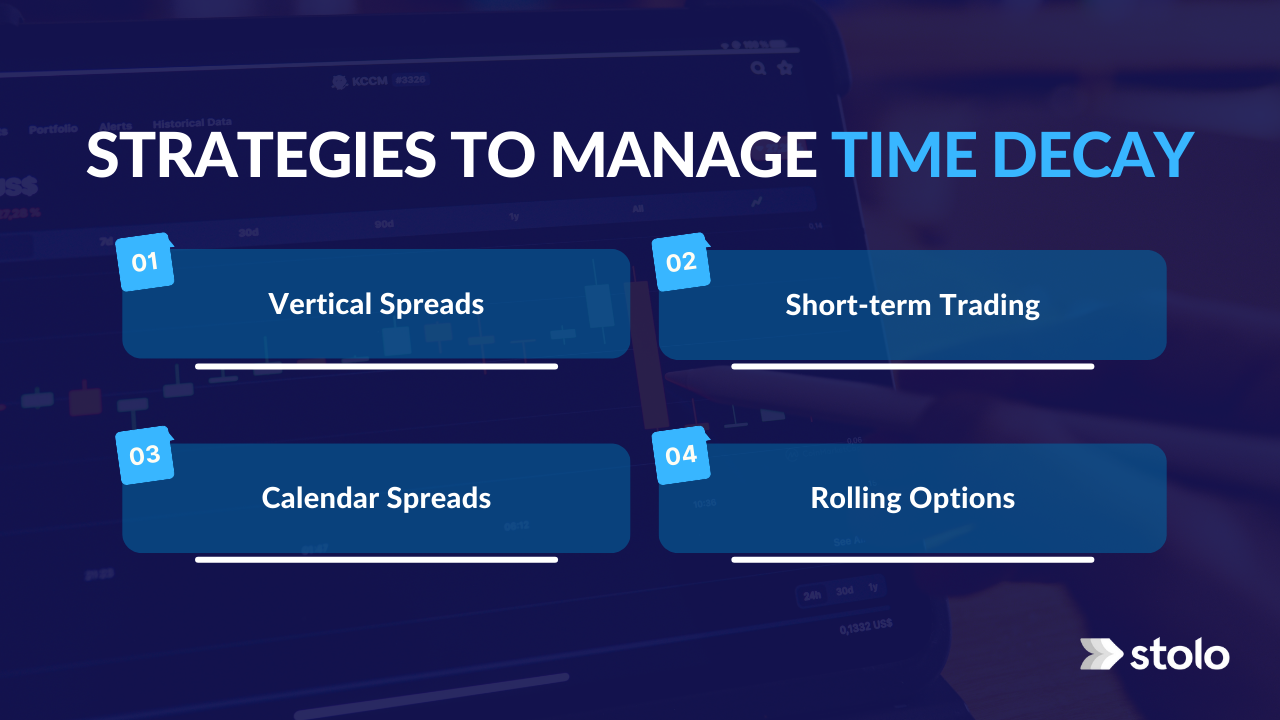As an options trader, you must grasp the idea of time decay. It is also known as theta decay, is the rate at which the worth of choice diminishes over time as time passes. This blog will describe what time decay is, strategies to manage it, and how it affects options trading.
What is Time Decay?
All options have an expiry date, after which they lose their value. The closer a choice gets to its expiry date, the less valuable it becomes. We refer to the decrease in the value of an option over time as time decay.
How Does Time Decay Work?
An option’s worth comprises two parts: inherent value and extrinsic value. Extrinsic value is an option’s value from variables such as time decay, implied volatility, and interest rates. It’s called intrinsic value when options are executed instantly. The extrinsic worth of an option decreases as it is near its expiration date and the rate of decline increases. The closer an option’s expiry date approaches, the less valuable it becomes. This is because the choice has less time to move in the intended way before it expires.
Impact on Options Trading
For options traders understanding time decay is critical. When purchasing options, time erosion works against you. This implies that the option’s value will decrease even if the underlying stock price stays constant. As a result, traders who purchase options must be conscious of time decay and factor it into their trading choices. When selling options, on the other hand, time decline works in your favour. This means the option’s worth will decrease over time, allowing you to repurchase it at a reduced price and profit. However, it is essential to note that selling options entails risk.
Strategies to Manage Time Decay
Traders can control time decay using a variety of techniques, including:

1. Vertical Spreads
Vertical spreads involve purchasing and selling two options with the same expiration date but distinct strike values. This can help mitigate time erosion’s effects on the options situation.
2. Short-term Trading
Short-term trading entails rapidly purchasing and selling options to capitalise on short-term market movements. Traders can rapidly reduce the effect of time decay on their positions by trading options.
3. Calendar Spreads
You can profit from time decay by selling options with shorter expiry dates and buying options with extended expiration dates.
4. Rolling Options
Rolling options entails selling a near-expired option and purchasing an option with a later expiry date. This can help to lengthen the options position’s time horizon and minimise its effect.
Conclusion
Finally, time decay is an important idea for options traders to grasp. It refers to the gradual decrease in the value of an option, which can have a major effect on options trading. Traders can improve their odds of success by knowing and adopting strategies to manage it. Explore Stolo options trading platform to interpret time decay with our charts and analysis tools.

